Raspberry Pi 400 Review: Faster CPU, New Layout, Better Thermals
The keyboard IS the computer
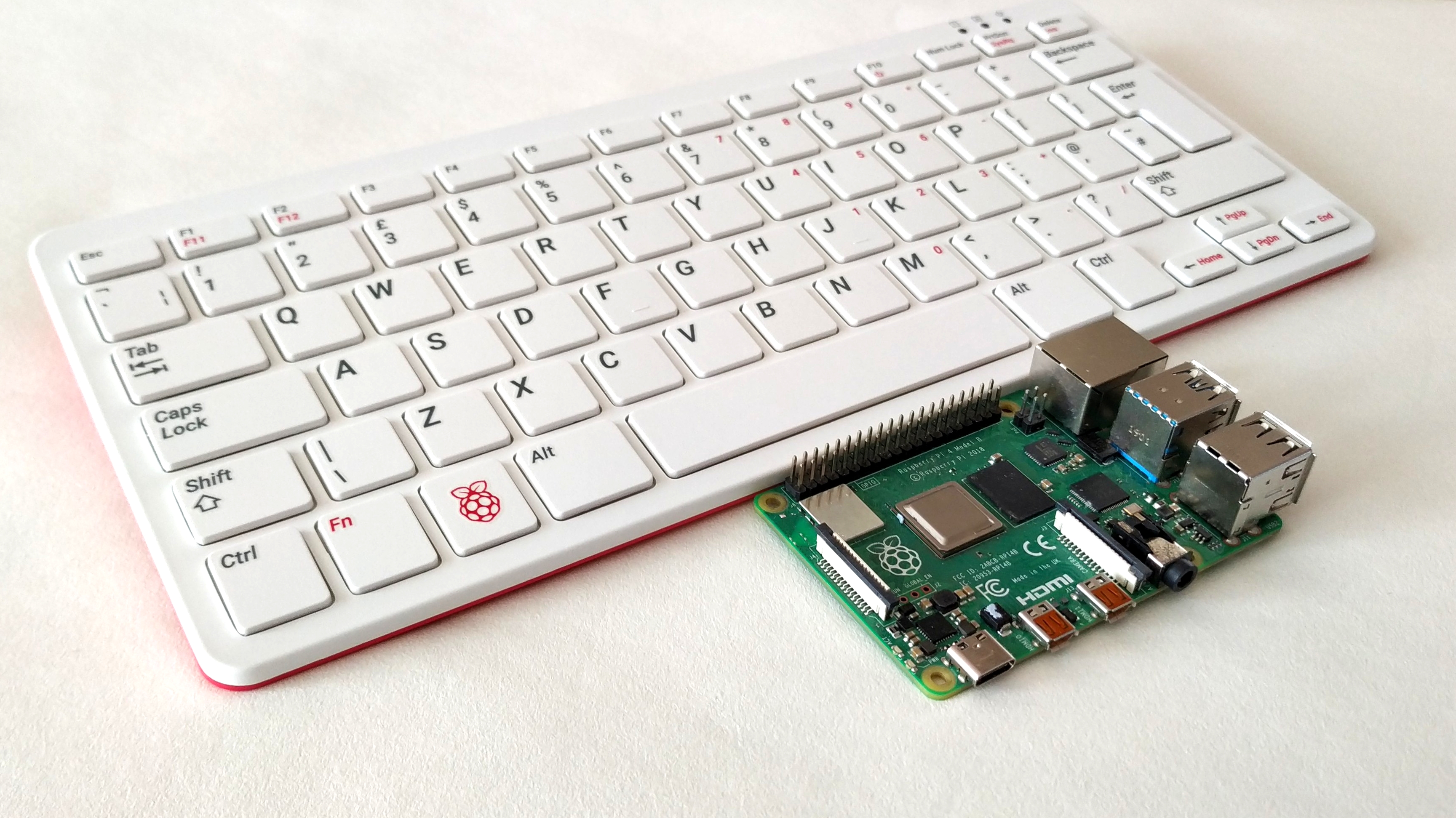
RATING: ★★★★ (4 out of 5 stars)
FOR:
+ Great form factor
+ 1.8 GHz CPU speed as standard
+ Fantastic thermals
AGAINST:
- GPIO access is awkward
- Lack of camera and display connector
OUR VERDICT:
A superb introduction to the Raspberry Pi, the Raspberry Pi 400 is a great way to enjoy a slice of Raspberry Pi.
The Raspberry Pi Model B has seen the same board layout since the Raspberry Pi B+ arrived in 2014. Sure the Raspberry Pi 4 swapped the Ethernet and USB ports around, but the same basic design has persisted. So when we received a parcel from Raspberry Pi Trading and opened the box to find a keyboard, we were somewhat puzzled as to the contents. Inside this compact and well designed keyboard is a Raspberry Pi 400, a variant of the Raspberry Pi 4 4GB designed specifically for this purpose.
Retailing as a single unit for $70 or as a complete $100 kit with mouse, power supply, cables, micro SD card and a copy of the Raspberry Pi Beginner’s Guide, the Raspberry Pi 400 could be the ideal way to introduce the Raspberry Pi to your home.
Design of the Raspberry Pi 400
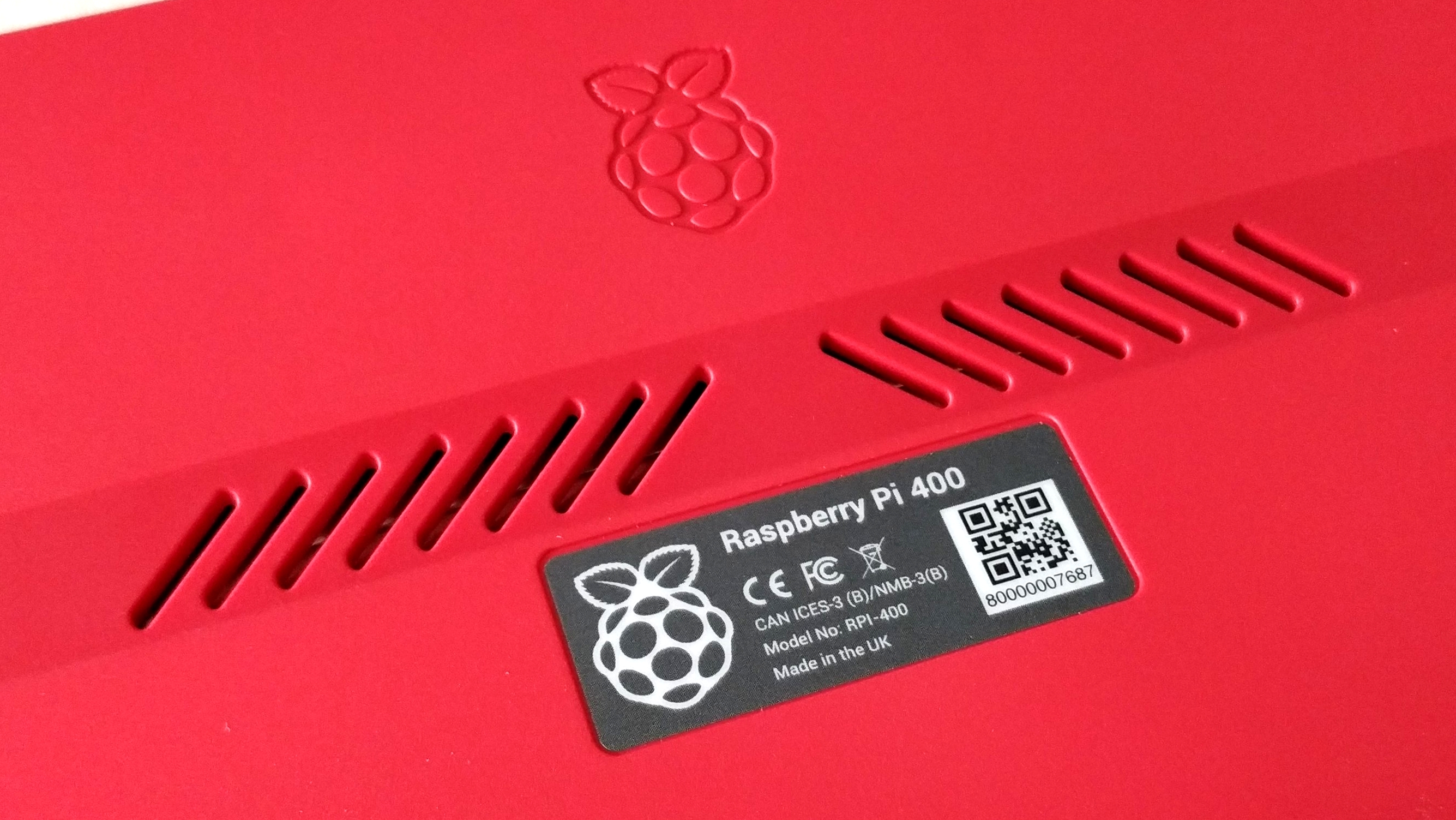
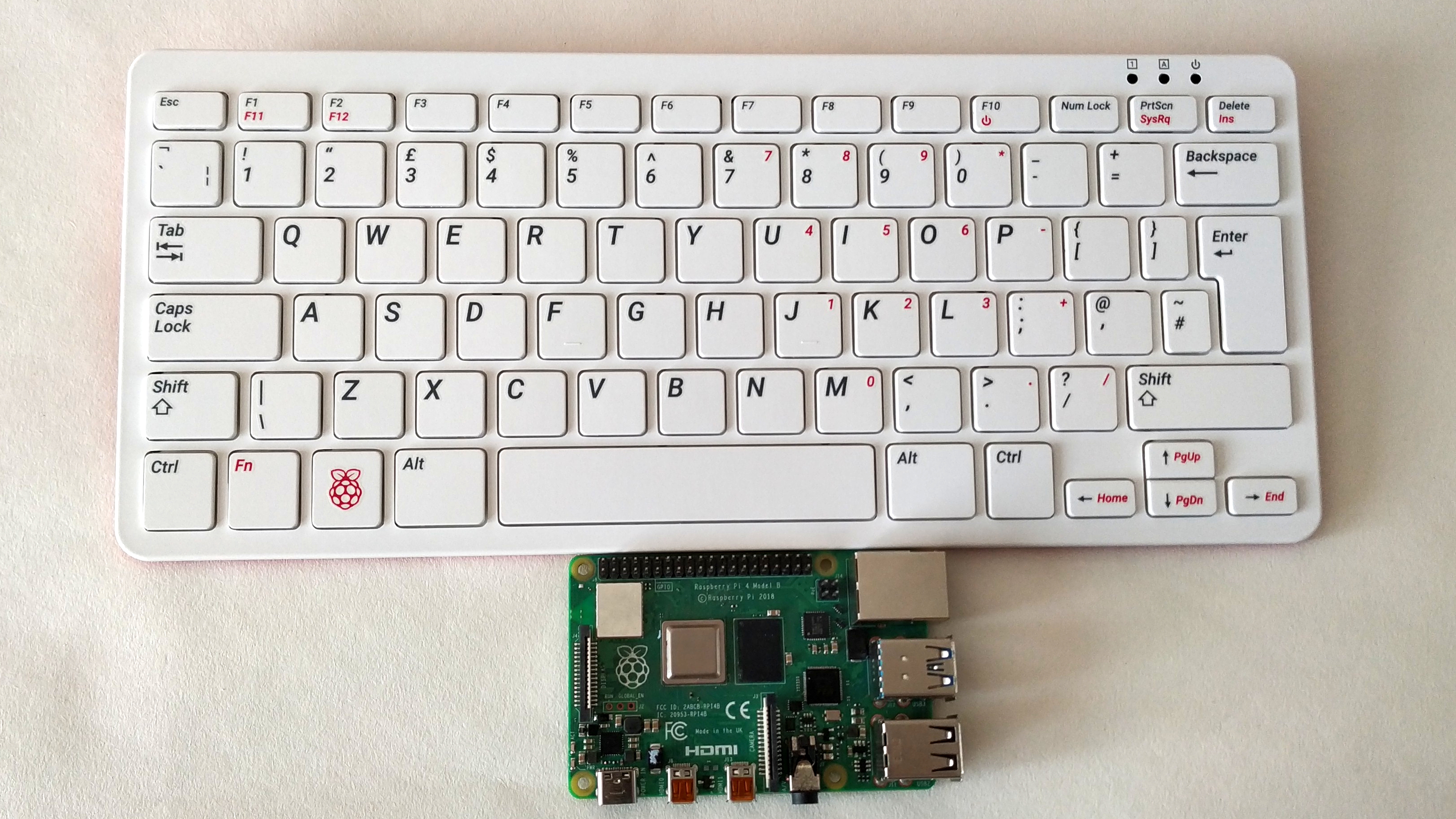

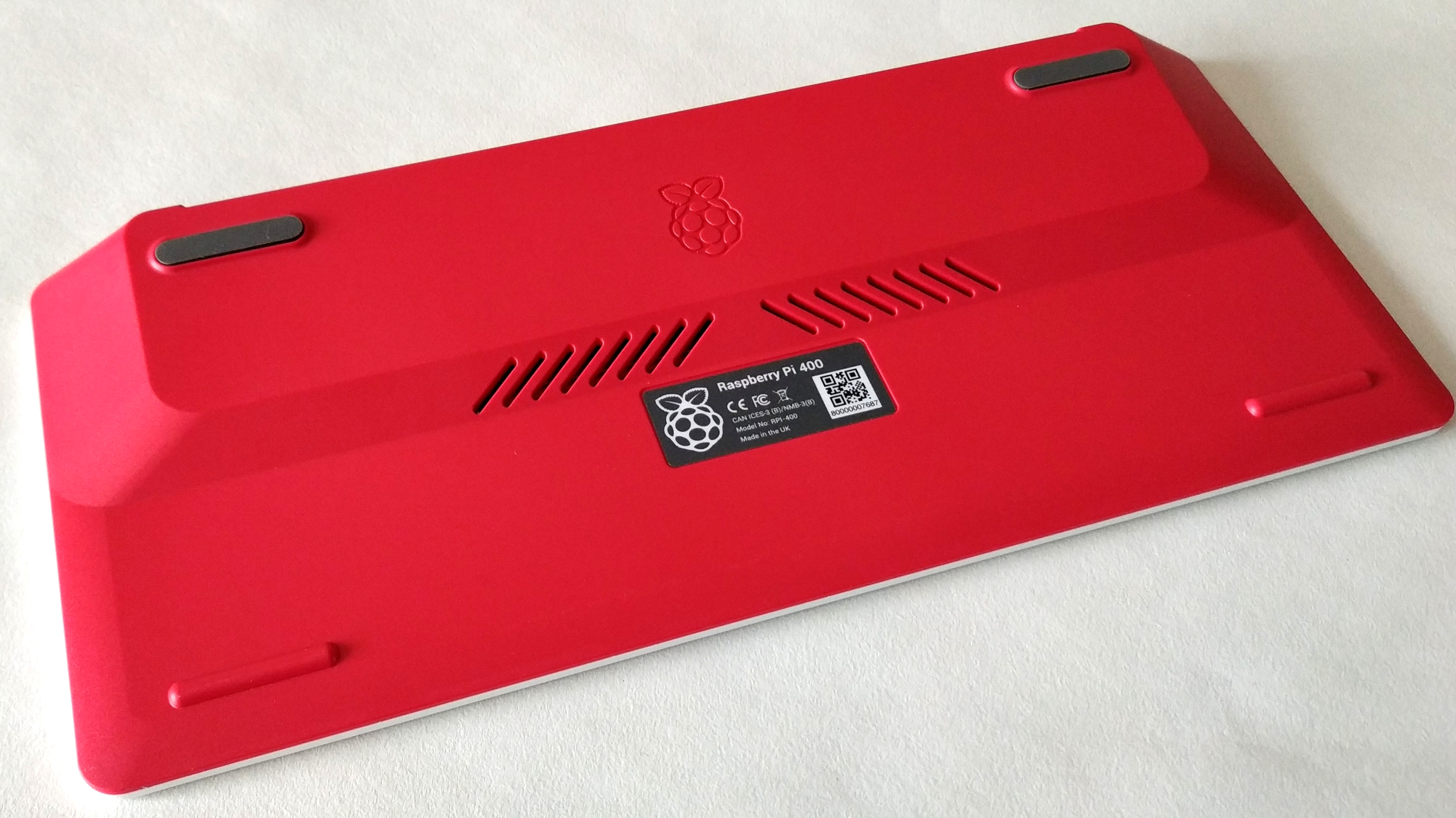

If you are of a “certain age” then you will remember a time when computers were hidden underneath a keyboard. Many of the early 1980s classic computers, from the Apple II to the Commodore 64, placed all of their internals in the same chassis as the keyboard.
The Raspberry Pi 400 brings that aesthetic back and it works rather well. The compact keyboard measures just over 11 x 4.6 x 0.7 inches (283 x 120 x 20 mm) and it is fairly comfortable to type on. we won’t be writing our next thesis with this keyboard, but it is more than capable for its intended purpose.
At the rear of the Raspberry Pi 400 are all of the ports, the largest of which is a 40-pin header for the GPIO. Moving along, we find a microSD card slot (see best Raspberry Pi microSD cards), two micro HDMI ports offering 4K output, two USB 3.0 ports and a single USB 2.0 port with a Gigabit Ethernet port rounding off the port selection.
Using the Raspberry Pi 400

Despite the change in form factor, this is still a Raspberry Pi 4 4GB and, as such, it behaves in exactly the same manner, with one exception. The Raspberry Pi 400 lacks the CSI and DSI connectors, used for the Camera and Official Touchscreen. Without these connectors there is no way to use those devices. This loss of the touchscreen connector is not such a big deal, but the camera connector is.
The range of Raspberry Pi cameras are cheap and effective add-ons (see our list of best Raspberry Pi accessories) that provide a fun stream of projects. If you want to create camera projects, then the Raspberry Pi 400 is not for you.
Get Tom's Hardware's best news and in-depth reviews, straight to your inbox.

Accessing the GPIO is relatively easy. We can use jumper wires to make connections to a breadboard, but connecting a HAT or pHAT is not possible without a breakout board such as Pimoroni’s HAT Hacker HAT. We understand why this had to be the only way to breakout the GPIO, but it is an obstacle for GPIO projects. With a breakout connected, we quickly attached an Explorer HAT Pro to test compatibility and everything worked as expected.
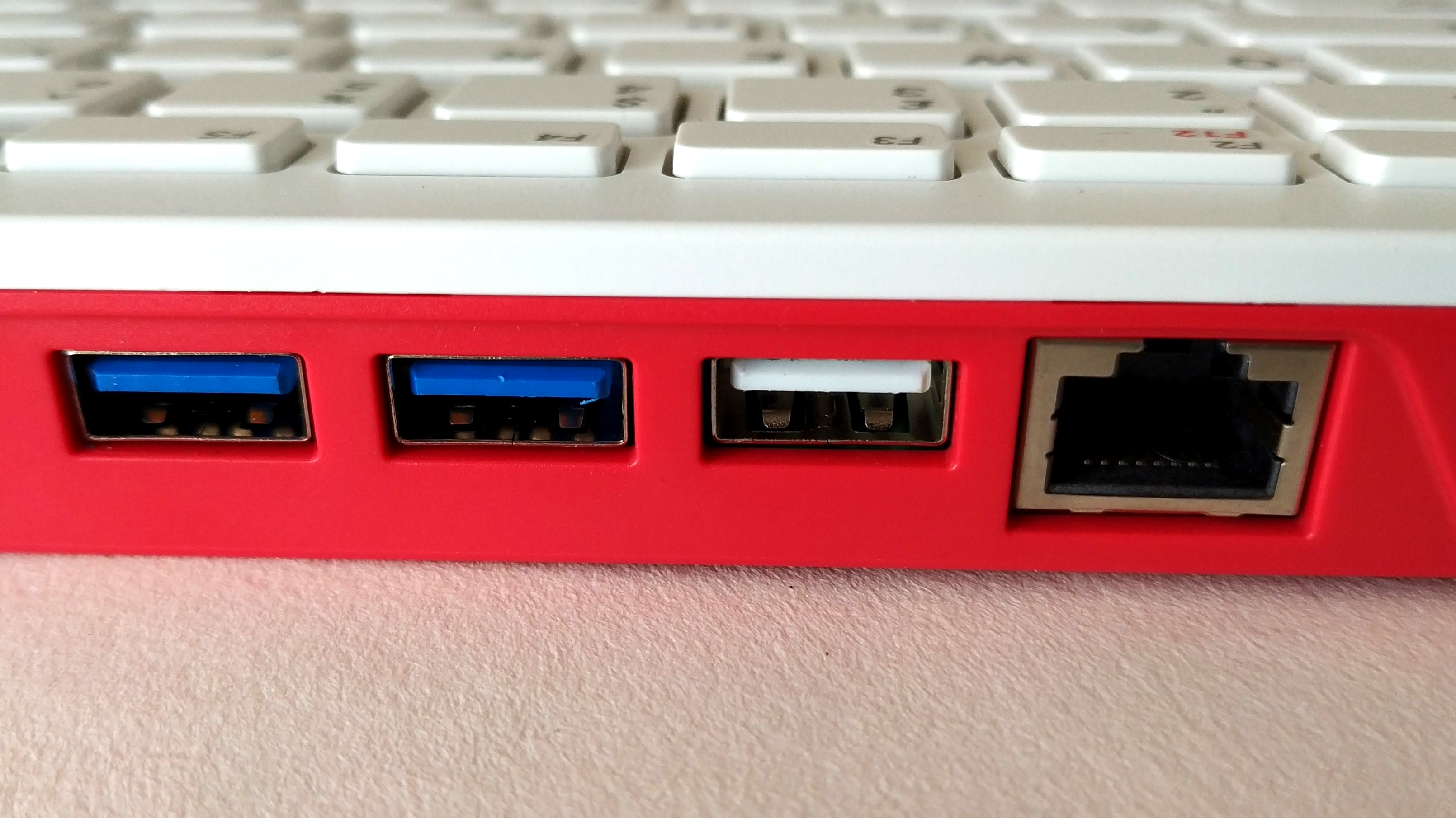
Like other Pis, the Raspberry Pi 400 has the ability to boot from USB (see how to boot a Raspberry Pi from USB), we attached an NVMe drive containing Ubuntu 20.10 via USB3 and the Pi 400 booted directly from it. There were no issues and our experience was super smooth.

The Raspberry Pi 400 is, at heart, a Raspberry Pi 4 and as we know the Pi 4 can get rather warm in use. In general use, the CPU will stay cool enough to remain well under the thermal throttle limit of 85 Celsius, but overclockers eager to squeeze extra performance from the CPU will often push those limits.
The stock speed of the Pi 400 is 1.8 GHz, 300 MHz more than the standard Raspberry Pi 4 and so it is surprising that the idle temperature of the Pi 400 is 31 Celsius, compared to our “control” Raspberry Pi 4 which was at 40 Celsius.
During our Stressberry test we saw the Pi 400 reach a peak of 46 Celsius, almost 20 Celsius lower than a stock Raspberry Pi 4! We wanted to push the Raspberry Pi 400 a little harder and so we overclocked it to 2.1 GHz and repeated the tests. Idle temperature was still a cool 32 Celsius, with a peak of 54 Celsius during Stressberry.
These temps are great, so can we push it a little further? We were able to beat the Raspberry Pi 4’s all-time record of 2.147 GHz and hit a stable overclock of 2.2 GHz. Keep in mind that there’s no fan, but we still saw an idle temperature of 34 Celsius and a peak Stressberry temperature of 57 Celsius, both well below the 85-degree throttle point..
But how can the Raspberry Pi 400 run at 1.8 GHz and yet remain so cool? We asked that question to Eben Upton, Chief Executive of Raspberry Pi Trading. “We are able to operate at a higher voltage, and thus generate more heat, because we have a more sophisticated thermal solution. So we took the decision to factory-qualify Pi 400 to the higher operating frequency. It is a unique capability for Pi 400.”

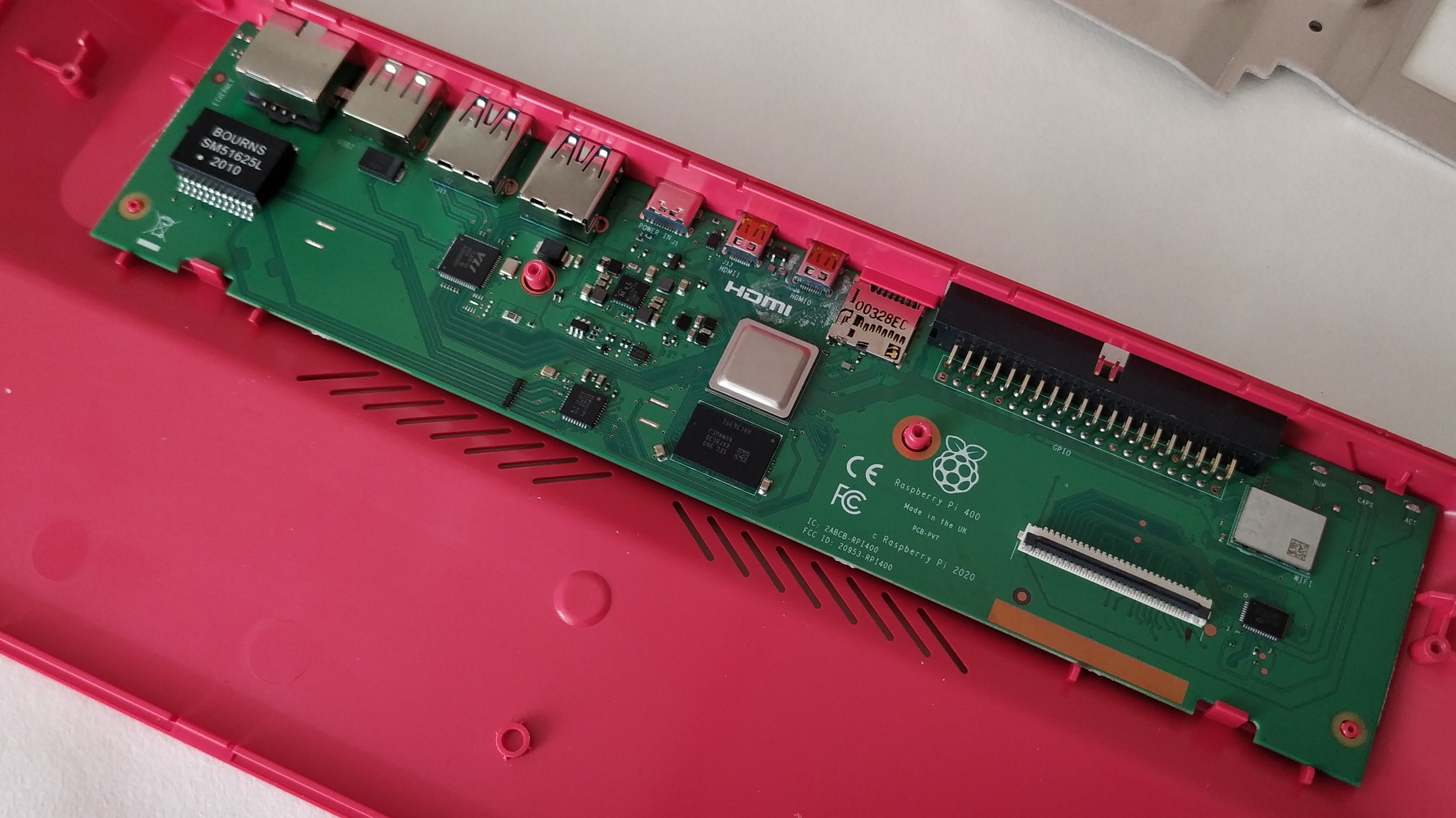
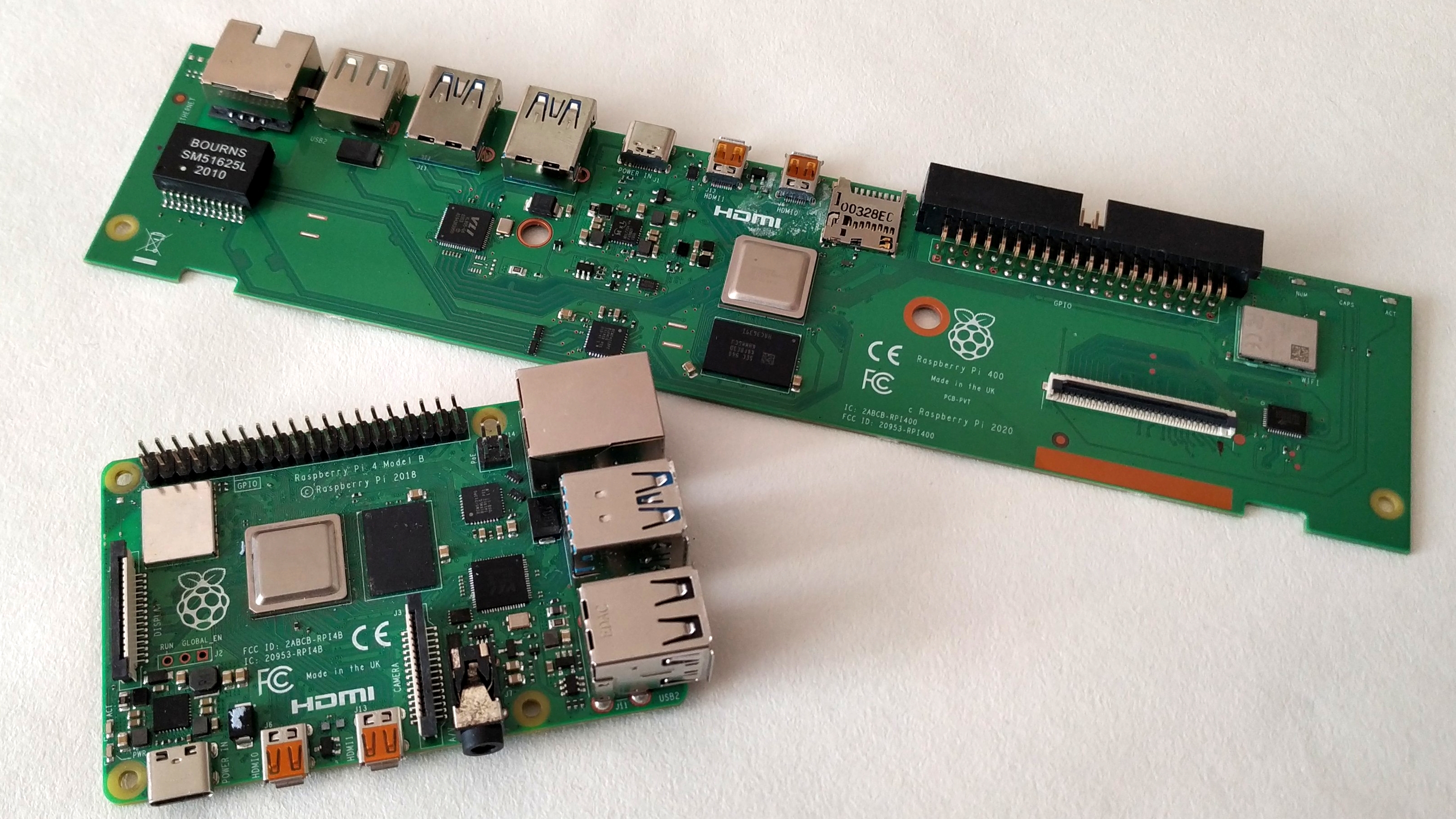
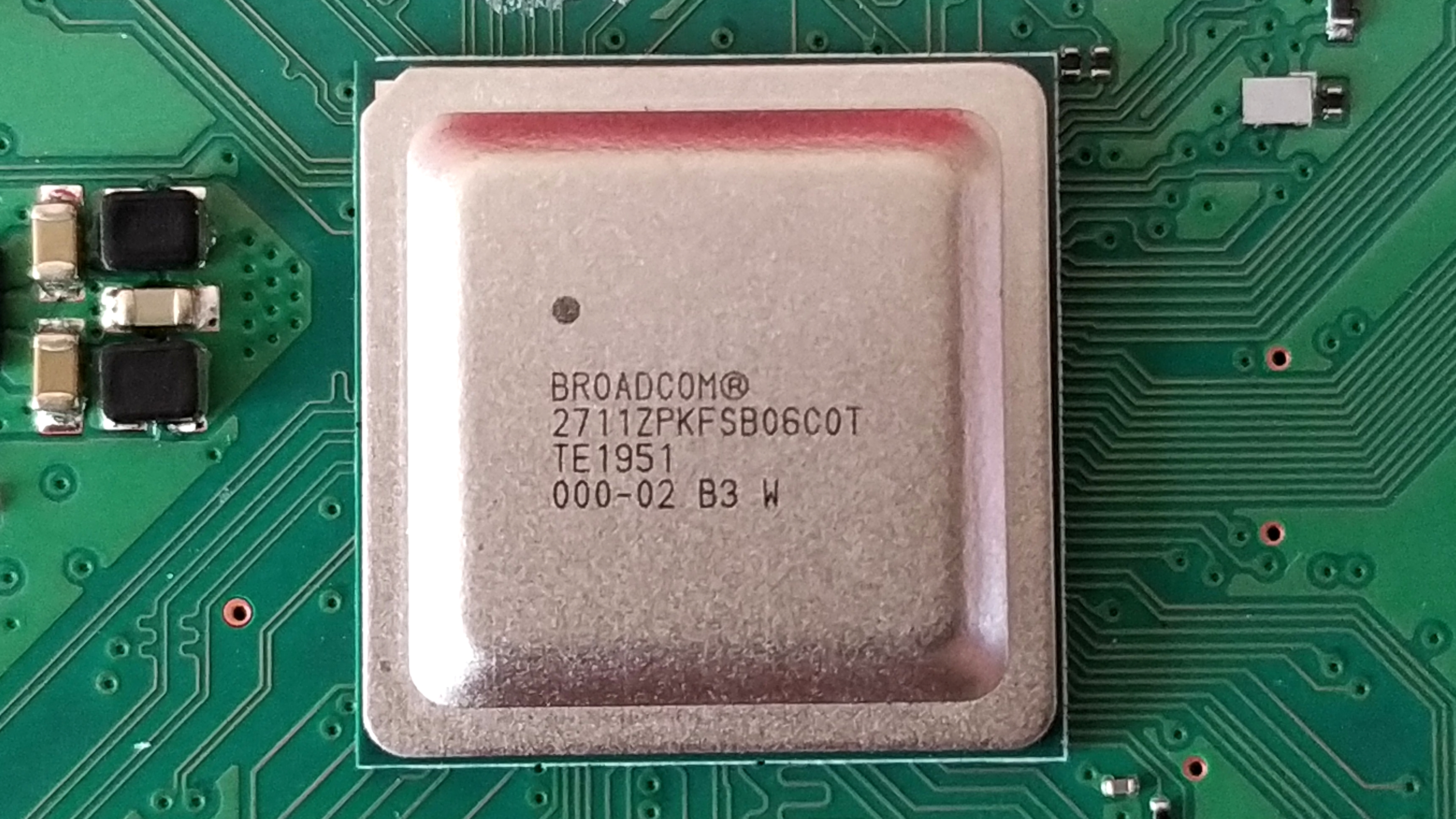
With this news spurring us on we quickly took the Raspberry Pi 400 apart and first noticed an exceptionally large heatsink. The heatsink is a “shield” between the keyboard and the Pi 400 board with a depression and thermal pad making contact with the system on chip (SoC). This heatsink is remarkable and largely responsible for the great temperatures, and overclocking ability of the Raspberry Pi 400.
Use Cases for the Raspberry Pi 400

We asked Eben Upton to explain why the Raspberry Pi 400 was created, and his response was “As the next step in our mission to provide cost-effective, high-performance, general-purpose PCs to everyone who needs/wants one. This form factor was very popular for non-mobile computers in the past, and we've sort of drifted away from it, in much the same way we drifted away from programmable computers. So this is a conviction product just like the Raspberry Pi itself: there's a latent demand for this sort of compact PC”
What does that mean for potential use cases? This is a Pi for learning. In a similar vein to 1980s home computers, this is a machine which we can simply connect to a television and power then start learning to code. The Raspberry Pi 400 can also be used as a basic desktop computer and is more than capable of handling your general activities.
Bottom Line

A departure from the norm, the Raspberry Pi 400 is a great all rounder. We get the same Raspberry Pi experience, but with far fewer wires and setup. As a $100 kit, the Raspberry Pi 400 is a great present for someone, particularly a child, taking their first steps into the Pi world and costs a little less than the official Raspberry Pi 4 Starter Kit ($115), which gives you the Pi 4 with a case and an external keyboard. Standalone units retail for $70 which is $15 more than a Raspberry Pi 4, but we get an added keyboard and a great CPU speed bump.
If money is no object and you’re buying a starter kit for a child or teen, the Elecrow CrowPi2 laptop ($269 without a Pi, $399 with the Pi and more), is also a great choice because not only is it a self-contained laptop, but it also comes with a smorgasbord of lights, motors and sensors built-in, along with tutorials to help you program them.
However, with the Raspberry Pi 400, you can always get whatever electronics you need and attach them, provided that you get a breakout cable and breadboard. The awkward GPIO access and lack of camera and display ports are the only negatives for the Raspberry Pi 400. All in all, this is a fantastic Raspberry Pi for those new to the platform.

Les Pounder is an associate editor at Tom's Hardware. He is a creative technologist and for seven years has created projects to educate and inspire minds both young and old. He has worked with the Raspberry Pi Foundation to write and deliver their teacher training program "Picademy".
-
Cpt_Black_Dot Realised this had come out yesterday evening. Definitely feels Old Skool. Like ZX Spectrum for instance. Loving the role back in designs. Great review mate. Cheers. 👌Reply -
King_V My first glance, and I had flashbacks.Reply
Then I saw the of a "certain age" comment, laughed about it . . then went "HEY! Wait a minute..." -
Procyon-Orion I ordered one the minute it became available here in Malaysia on Nov 2nd, and I already own four Raspberry Pi 4s. This brilliant retro-esque design brings back memories of the Amiga 500 and Atari 520ST. I'm looking forward to overclocking this thing to the max. I currently run my 8GB Raspberry Pi 4 at 2350 MHz CPU and 750 MHz GPU at 4K 60p, stable as a rock even under load, thanks to the Argon One case's awesome thermal dissipation. With this new Stepping C0 revision of the BCM2711 SoC, with its 1800MHz base clock, I am expecting to go to at least 2400 MHz or higher, although I would have to find a way to get cool air into the keyboard case, maybe up through the vents at the bottom. Maybe also replace the stock thermal pad with Thermal Grizzly Kryonaut TIM. Warranty? What warranty?Reply -
strinjf Reply
Loved my Acorn Atom, in fact I've still got it :giggle:excalibur1814 said:Or, even, the BBC Model B. or Acorn Electron. or Acorn Atom. -
CooliPi What a pity the haven't use full size HDMI for one of the video outputs. I see this as a potential weak point in an otherwise great design. I feel nostalgia too.Reply -
MiauCat @CooliPi: full size HDMI ports would not have fit on the design - they take up more space, and Raspberry Pi wanted to include both HDMI ports.Reply
In fact, the space constraints are the reason they've left off the AV jack. I'm detailing it here, in my 23 fun facts about the Raspberry Pi 400 article.
https://picockpit.com/raspberry-pi/23-fun-raspberry-pi-400-facts/ -
CooliPi #3 is interesting - but I still don't know, whether it really turns 5V off on the GPIO port. Seems unlikely.Reply -
MiauCat Thank you :-)Reply
I don't think 5 V on the GPIO will be turned off - that would possibly disable some HATs which do power management, etc.